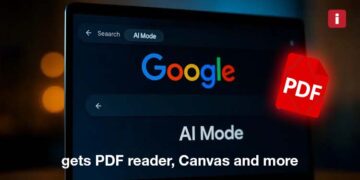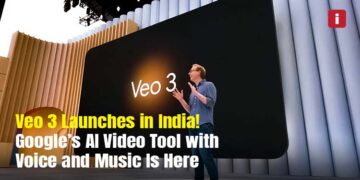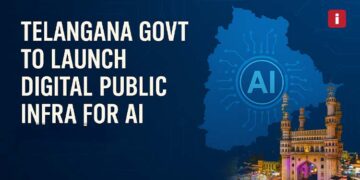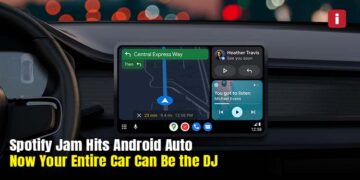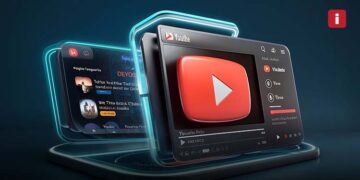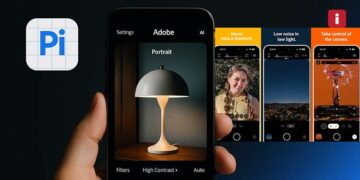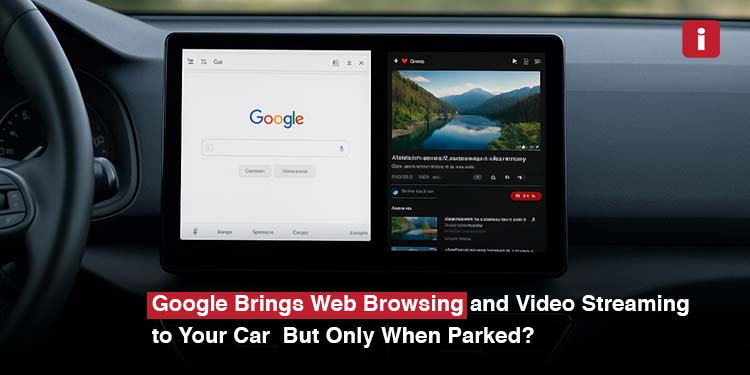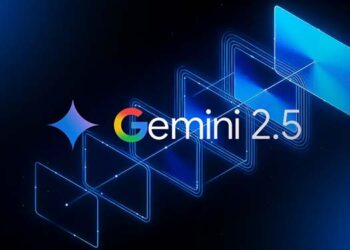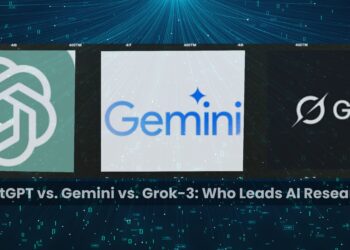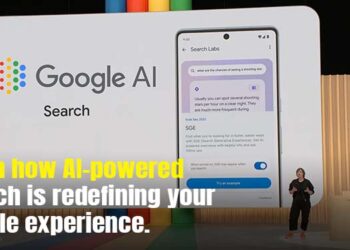Google has officially introduced web browsing and video streaming capabilities to Android Auto as part of its 2025 product updates announced at Google I O. These new features are designed to enhance the in-car infotainment experience but will only be available while the vehicle is parked.
During the second day of the annual Google I O developer conference, the company unveiled significant improvements to its in-car technology. One of the most notable announcements was the introduction of web browsers and video apps within Android Auto, offering drivers and passengers a more interactive and connected dashboard experience.
Google made it clear that these features will only function when the vehicle is stationary. This restriction aligns with the company’s continued focus on road safety and regulatory compliance across global markets.
Android Auto Evolves into an Entertainment Hub
Android Auto has been steadily expanding its capabilities since its initial release. It began as a simplified interface for navigation and music but has now grown into a comprehensive platform for apps and services. The latest additions are part of Google’s strategy to turn the car into a connected and versatile digital space.
With the inclusion of web browsers, users can access news articles, check emails, or perform quick searches from the vehicle’s infotainment screen. Meanwhile, the support for video streaming applications like YouTube and Tubi means that passengers or drivers on a break can watch content without needing to use a separate device.
These features are designed with idle time in mind. Whether a driver is waiting to pick someone up or charging an electric vehicle, the parked-only content feature offers a practical way to stay entertained or productive.
Google Reinforces a Safety-First Approach
While the integration of web and video apps into Android Auto is a leap forward in vehicle technology, Google has emphasized that these functions will only be available while the car is not moving. This approach reflects increasing concerns from regulators and safety advocates regarding distracted driving.
In many regions, safety standards strictly prohibit video playback or full web access while driving. By limiting these features to parked sessions, Google ensures compliance while still enhancing the infotainment system’s capabilities.
The announcement also puts Google in line with other automakers that have taken a cautious approach to in-car entertainment. Tesla, for instance, allows streaming through its Theater Mode but only while parked. BMW and Mercedes-Benz also offer similar systems that disable certain features while driving.
Part of a Broader Expansion
The new Android Auto capabilities are only one part of Google’s larger vehicle tech ecosystem. The company is also continuing to invest in Android Automotive OS, which powers entire infotainment systems in some cars without needing a phone connection.
Google’s focus on improving both Android Auto and Android Automotive highlights its commitment to dominating the connected car space. As cars become more software-driven, automakers are increasingly turning to tech firms like Google for infotainment and smart features.
Google confirmed that Android Auto now supports approximately 250 million vehicles worldwide. This new update is expected to reach a wide range of compatible models in the coming months, depending on manufacturer partnerships and hardware compatibility.
The Rise of Smart In-Car Systems
As the automotive industry moves towards electrification and automation, the in-car experience is becoming a major area of innovation. Car buyers are not only evaluating engine performance and fuel efficiency but also infotainment features and smart connectivity.
By allowing users to browse the web and stream content, Google is adapting to modern consumer expectations. Vehicles are becoming more than just a mode of transport. They are transforming into personal spaces where people expect the same level of digital access they have on smartphones and tablets.
This is particularly relevant for long-distance travel, ride-sharing scenarios, and electric vehicle usage, where parked time is more frequent. Whether for entertainment, work, or staying informed, these tools add a new dimension to in-car engagement.
A Shift in the Search and App Economy
There are also broader implications for app developers and marketers. Web and video functionality inside cars opens up a new user environment that has largely remained untapped. With Android Auto integrating more app experiences, developers may begin optimizing their products for in-car use.
Google’s move could also impact digital ad strategies, content consumption patterns, and even search behaviors. The parked-only nature of these tools ensures minimal safety risk, but their potential reach could make cars the next frontier in digital interaction.
What to Expect Next
Although Google has not provided an exact release date, the rollout of browser and video functionality in Android Auto is expected to begin later this year. Users will need the latest version of Android Auto and compatible hardware in their vehicles.
As more automakers update their systems, and as Android Auto continues to expand globally, this feature is likely to reach millions of drivers in the coming year. The future of the in-car experience will be shaped not only by autonomous driving and electrification but also by what drivers can do while safely parked.
Conclusion
Google’s latest announcement at I O 2025 signals a major milestone in the evolution of connected car technology. By bringing web browsing and video streaming to Android Auto, Google is reinforcing its role as a leader in smart mobility.
While these features are limited to when the vehicle is parked, their presence marks the growing importance of infotainment in modern vehicles. From productivity to entertainment, Google is redefining what drivers can expect from their car’s dashboard.
Insight Tech Talk will continue monitoring this rollout and reporting on how it affects drivers, developers, and the future of in-car experiences.








